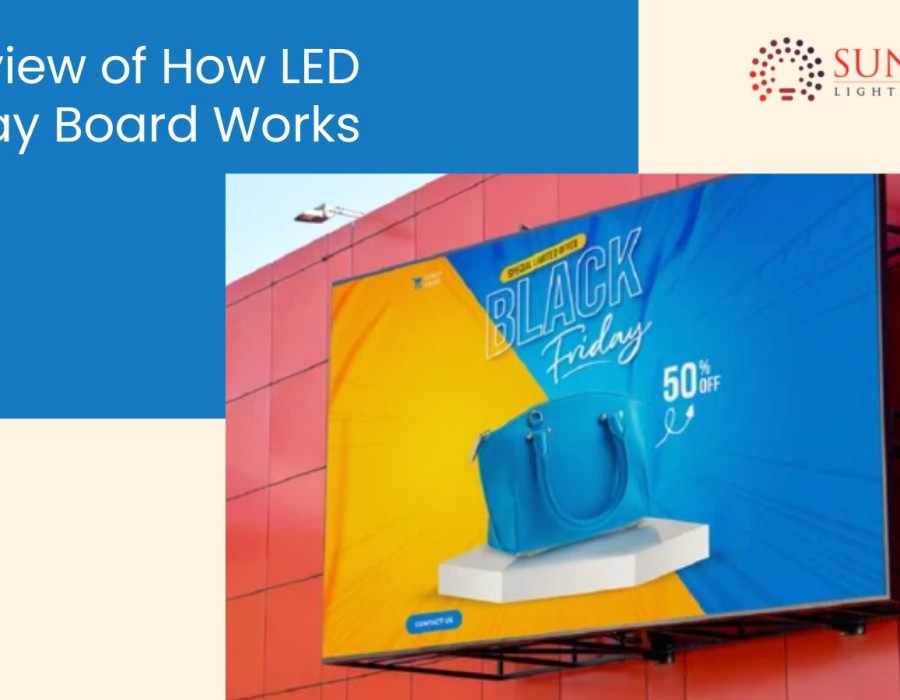LED display boards are highly effective tools for conveying information, advertisements, messages, and announcements to a large audience. Their bright and vibrant displays ensure that content is easily noticed and understood, making them valuable for advertising, public announcements, and information dissemination.
An LED display board, also known as an LED screen or LED sign, is a display technology that utilizes Light Emitting Diodes (LEDs) to produce vibrant and illuminated visuals. Here's an overview of how LED display boards work:
LEDs (Light Emitting Diodes)
LEDs are semiconductor devices that emit light when an electric current passes through them. Unlike traditional light bulbs, which use incandescent or fluorescent technology, LEDs are solid-state and don't rely on a filament or gas to produce light. This makes LEDs more energy-efficient and durable.
Pixel Matrix
LED display boards are composed of an array of individual LED modules or chips arranged in a grid-like pattern. Each module represents a single pixel in the display, and the density of these pixels is often referred to as "pixel pitch," which determines the resolution and image quality of the display.
RGB LEDs
Most LED display boards use three primary colors of LEDs - Red, Green, and Blue (RGB). By varying the intensity of these three colors in each pixel, a wide spectrum of colors can be generated. This is known as additive color mixing.
Electrical Current Control
To create different colors and brightness levels, each LED within a pixel can be controlled independently. The display board's control system sends electrical current to each LED to adjust its intensity. By varying the intensity of the RGB LEDs, various colors and shades are produced.
Refresh Rate
LED display boards typically have a high refresh rate, which is the number of times the screen refreshes its content per second. A high refresh rate ensures smooth motion in videos and reduces flickering.
Content Processing
A controller or processing unit manages the content that is displayed on the LED digital display board. It receives input signals, such as images or video, and converts them into data that the LED modules can understand. This data is sent to the individual pixels to display the desired content.
Brightness Control
LED display screens can adjust their brightness levels to adapt to different lighting conditions. This is particularly important for outdoor LED displays, where the ambient light can vary throughout the day.
Scanning Method
LED display boards use either static or dynamic scanning methods. Static scanning means that all LEDs are on simultaneously, while dynamic scanning sequentially turns on and off groups of LEDs very quickly. Dynamic scanning can help save power and reduce heat generation.
Driver ICs
Integrated circuits known as Driver ICs are used to control and manage the LEDs, ensuring proper timing and color output for each pixel.
Conclusion
LED display boards work by using an array of individual LEDs arranged in a pixel matrix. These LEDs emit light when an electric current passes through them, and by controlling the intensity of RGB LEDs for each pixel, the display can create a wide range of colors and visuals. The control system processes content, manages brightness, and ensures a smooth and visually appealing display.





Comments